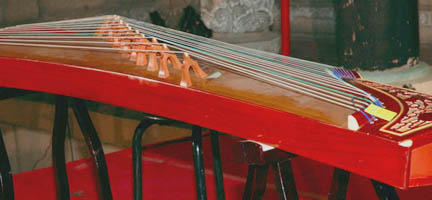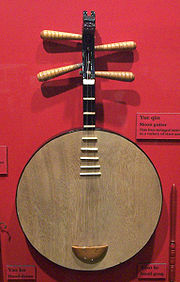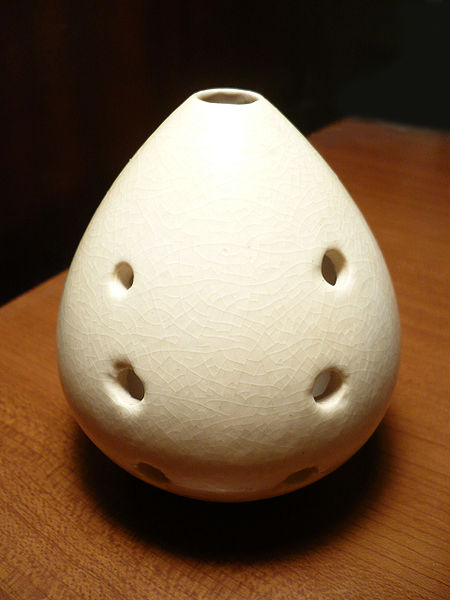
10 CHINESE INSTRUMENTS
Chinese musical instruments can date from several thousands years ago.
The Guqin is a long zither with seven strings and no frets. It has been played since ancient times.

A famous Tang Dynasty (618–907) qin, the "Jiu Xiao Huan Pei"
The Guzheng is descended from the Guqin. This instrument has from 15 to 25 strings with a bridge for each string which aids tuning and allows bending the strings to introduce microtones. Both hands of the player wear fingerpicks to pluck the strings.

A modern Guzheng.
The Sanxian is a three string banjo or lute.
The Yueqin is a moon shaped guitar or moon zither with four strings. There is a picture below.

An undecorated Yueqin.
Yangqin, a hammered Dulcimer.
Kouxian, a Chinese Jew's Harp with three leaves.
Xun, a Chinese Ocarina. It does not have a fipple, a narrow sharp opening to make the sound. Picture below.

This Xun has eight finger holes. The fipple would be a slit below the blow hole at the top of the clay instrument.
PIPA Duet. The Pipa is a Chinese pear-shaped fretted lute with 4 or 5 strings.
SHENG a musical instrument with multiple bamboo pipes, each fitted with a free reed. The pipes are fitted to a long blowing tube made of hardwood. It is a type of portable organ blown by the player. There are several sizes and the number of pipes may vary. The Lu Sheng is slightly larger than the Sheng.
The Erhu or Chinese Fiddle is a two stringed instrument with a small soundbox covered with Python skin. The bow is placed permanently between the strings. The instrument is very expressive.
Duxianqin, or Monochord has only one string which is plucked with the right hand while the left hand manipulates a flexible rod to control the pitch.
Another Duxianqin.
Hulusi, a Chinese gourd flute. The gourd holds several pipes and acts as a wind reservoir.